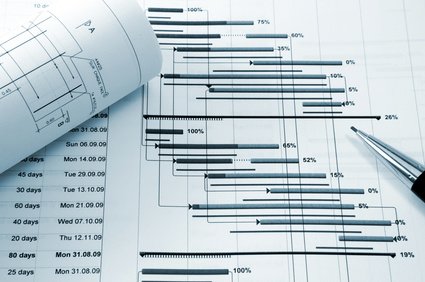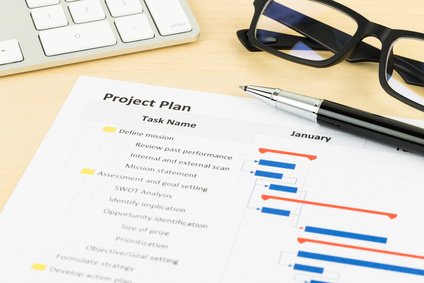Software Tips
What is a project?
A project is a time-defined and one-off task with a specific start and end point.
A project is an undertaking that is essentially characterized by the uniqueness of the conditions in their entirety, such as: Objective, time, financial, personnel or other conditions, delimitation from other projects and project-specific organization.
Projects can vary greatly in scope and complexity. A construction project can involve numerous trades and project participants, while the development of a software app can be completed in a relatively short time with just a few programmers.
What is project management?
Project management comprises the planning, control and implementation of a project. There is usually one person responsible for the project, the project manager or project leader, and the project team members. The main task of project management is to achieve the set goal of the project while adhering to the time frame and budget and delivering the desired quality.
Regardless of the project management method chosen, project management goes through various project phases. As a project has a defined start and end point, there is therefore a start phase and a project completion phase. Furthermore, a planning phase and the realization or implementation of the planning are necessary. These two sections can also be divided into more than just two phases.
The individual project phases can overlap or be organized sequentially. The latter means that one phase must be completed before the next can begin. Project management comprises a variety of components that help to plan, monitor and complete projects effectively.
Important components of project management
Project objectives and scope: Defining clear project objectives and scope is crucial to establish the focus of the project and ensure that all stakeholders have a common understanding of what is to be achieved
Resource planning: The planning and allocation of human, financial, time and material resources needed for the project to ensure that all requirements can be met.
Time management: Developing a schedule, setting milestones and deadlines, and monitoring progress to ensure that the project is completed on time.
Communication: Establishing effective communication channels and structures to ensure that all stakeholders are kept regularly informed and that issues can be addressed quickly.
Risk management: The identification, assessment and management of risks that could affect the project and the development of strategies to minimize or manage risks.
Quality management: The establishment of quality standards and guidelines and the monitoring of project implementation to ensure that results meet expectations.
Stakeholder management: The identification and engagement of all stakeholders, including customers, team members, suppliers and other involved parties, to ensure that their needs and expectations are taken into account.
Change management: The management of changes in project scope, schedule or other aspects of the project to ensure that the project remains flexible and can adapt to changing requirements.
Documentation: The creation and maintenance of project records, reports, logs and other documents to record project progress and status and to serve as a reference for future projects.
Closure and evaluation: The formal closure phase of the project, including reviewing results, success against objectives, documenting lessons learned and conducting final stakeholder reporting.
Project management methods
There are various project management methods. In addition to the traditional or classic method, there is also agile project management and a combination of the two methods mentioned, hybrid project management. A large number of methods and terms are used in connection with project management.
Classic project management
The classic or traditional method is often referred to as the waterfall method because the individual tasks are sequenced from the beginning to the end of the project like a kind of waterfall. The method is particularly suitable for projects whose tasks are interdependent (sequential), as is the case in the construction industry, plant engineering or production, for example.
These classic methods generally use Gantt charts or networks and milestones. Classic project management offers a variety of methods for control and management. Classic project management methods include DIN, milestones, PMI (Project Management Institute), Six Sigma, ICB 4.0 (Individual Competence Baseline) and many more.
Agile project management
Scrum and Kanban are among the most frequently used agile project management methods. Agile project management focuses on self-organized teamwork and working in short iteration cycles.
With this method, the client or customer is presented with a preliminary result at the end of each cycle and can issue partial acceptances, request changes or provide feedback.
Scrum, Kanban, Design Thinking, Lean Management, Lean Startup, XP (Extreme Programming) and many other agile methods are ideal for large, complex projects in production and software development.
Hybrid project management
Hybrid project management is a combination of two project management methods, usually classic and agile.
Agile approaches such as PRINCE2, Hermes, V-Modell XT, V-Modell Bund, Crystal, Dynamic System Development Methodology (DSDM), Feature Driven Development (FDD), project process according to IPMA, PMBOK® Guide etc. are implemented with a narrow or fixed framework.
Of course, two agile approaches can also be combined with each other. For example, PRINCE2 or Hermes can be combined with methods such as Scrum or Kanban. Ultimately, there are no limits to the "joy of combination".
Which project management method is suitable for which project?
It is not easy to say which method is best suited to which project or project environment. If the project is easy to plan in terms of activities and times, if you have fixed structures and requirements, classic methods are preferable. If you are working on customer-oriented projects with a high communication effort, developing software or advertising campaigns etc., working in flexible environments, then agile methods are the better choice. Combinations of methods are often also suitable for successful project work.
Table: Comparison of project management methods
Advantages of using project management software
Project management software offers numerous advantages that support companies in the efficient planning, management and implementation of projects. It provides a central platform on which all project information and activities converge, helping to complete projects on time and on budget and increase efficiency within the company. Project management software tools are usually designed to support the most common project management methods and techniques. However, please note that not all software is able to fully map every conceivable method.
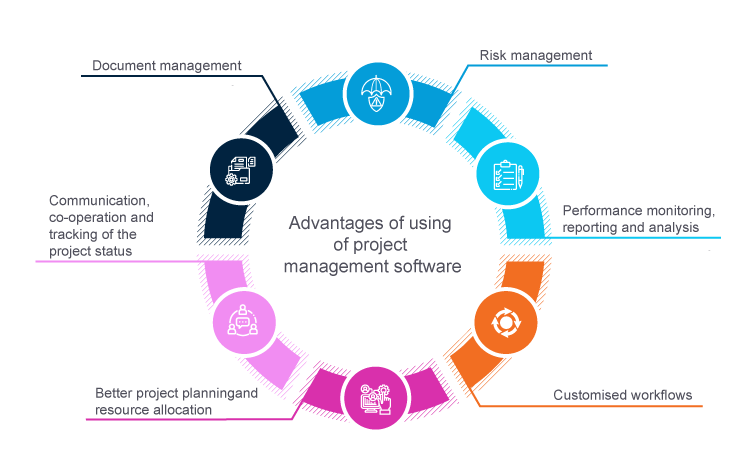
Project management methods such as Waterfall, Scrum, Kanban, PRINCE2, Agile, Lean and many others each have their own specific processes, practices and tools. Some project management tools are specifically geared towards one or more of these methods and offer functions and templates that meet the requirements of these methods. To reap the benefits of project management software, it is therefore important to consider the requirements of your project and preferred project management method when looking for project management software.
Better project planning and resource allocation
Project management software enables detailed project planning of tasks, milestones and resources. The visual representation of schedules and processes facilitates planning and creates transparency. The software supports the optimal allocation of resources, including employees, budgets and materials. This minimizes the waste of resources and ensures maximum efficiency. The software generally automates routine tasks such as creating reports and Gantt charts, which saves time and minimizes administrative effort.
Communication, collaboration and tracking of project status
Project management software promotes communication within the team and with stakeholders. Updated information and documents are easily accessible, which reduces misunderstandings. The software also enables real-time tracking of project progress, so you always know whether the project is on schedule or experiencing delays. Project management software usually also includes tools for cross-team collaboration, regardless of geographical location. Teams can collaborate, share files and give feedback in real time.
Document management
Project management software usually provides a central repository for documents so that project participants can easily access all relevant information. This eliminates the hassle of searching for files in emails or different folders. The software often also supports the management of different versions of documents. This is particularly useful when several people are working on a document and changes need to be tracked. The integrated document management ensures that the latest version is always available. Naturally, the software includes access management to ensure that only authorized persons can access certain information and make changes. Document management within the project software also includes search and filter functions that make it much easier to find documents. You can search by keyword, date, author and other criteria.
Risk management
The software enables the identification and management of project risks. All risk information and activities are recorded and logged in the software. This creates a clear history and documentation for later analysis and reporting. Project management software enables risk analyses to be carried out and scenarios to be planned. The software supports the management of risk mitigation measures. You can define measures, assign responsible persons and track their progress. Risk information can be presented transparently for project participants and stakeholders. This creates trust and enables better communication regarding potential challenges. The software stores historical risk data, which is invaluable for future projects. Teams can learn from past risk experiences and improve their risk management skills.
Performance monitoring, reporting and analysis
Among other things, project management software supports performance tracking and monitoring the performance of team members and tasks, often in real time. This promotes accountability and helps identify bottlenecks. The software generates reports and analytics that provide insights into project progress, budget overruns and resource utilization. The comprehensive data and analysis provided by the software supports informed decision making and continuous improvement in project planning and execution. Project management software provides tools to monitor time and resource allocation as well as analytical tools to identify patterns and trends in project progress. This enables proactive adjustment of the project strategy.
User-defined workflows
Custom workflows are a key feature in many project management software applications. They allow companies to customize their workflows and processes to meet specific requirements and business processes. In most project management software applications, custom workflows are created visually. This means that you can design the work steps, states and transitions in a graphical editor. Custom workflows make it easier to track the progress of tasks and projects. This is particularly important for traceability, quality assurance and risk management.
 PROJEKTA digitally maps your project structures. Simple as well as complex and recurring structures are optimally controlled. Project templates and the automatic early warning system facilitate project coordination. Progress checks, evaluations, cross-project resource planning, up-to-date appointment calendars, comprehensive CRM features and much more are available for your projects. The detailed role and rights system ensures a simple interface for project staff and provides detailed information for project managers.
PROJEKTA digitally maps your project structures. Simple as well as complex and recurring structures are optimally controlled. Project templates and the automatic early warning system facilitate project coordination. Progress checks, evaluations, cross-project resource planning, up-to-date appointment calendars, comprehensive CRM features and much more are available for your projects. The detailed role and rights system ensures a simple interface for project staff and provides detailed information for project managers. Clarity PPM as software meets all requirements of operational and strategic PPM. The strengths include the combination of project, resource, financial and portfolio management as well as multi-project management. Clarity PPM offers extensive configuration options and can be optimally adapted to your individual requirements so that you get the maximum benefit from the application. Whether SaaS or as an on-premise solution. As the manufacturer's only Tier 1 partner in Germany and Austria and strongest partner in Europe, itdesign is the right address for you.
Clarity PPM as software meets all requirements of operational and strategic PPM. The strengths include the combination of project, resource, financial and portfolio management as well as multi-project management. Clarity PPM offers extensive configuration options and can be optimally adapted to your individual requirements so that you get the maximum benefit from the application. Whether SaaS or as an on-premise solution. As the manufacturer's only Tier 1 partner in Germany and Austria and strongest partner in Europe, itdesign is the right address for you. SO3 is designed for project management and engineering. The central plant layout supports you in communication. It schematically visualizes complex plants and is the central hub for all requirements, clarifications and discussions. All project participants can see the current project status in the layout with just a few clicks. As a project planning and documentation tool, SO3 generates electrical and fluid engineering Eplan documentation based on the layout data.
SO3 is designed for project management and engineering. The central plant layout supports you in communication. It schematically visualizes complex plants and is the central hub for all requirements, clarifications and discussions. All project participants can see the current project status in the layout with just a few clicks. As a project planning and documentation tool, SO3 generates electrical and fluid engineering Eplan documentation based on the layout data. The modular, scalable ERP software Odoo can be perfectly adapted to your exact operational requirements. We offer an ERP and the associated digitisation of your company from a single source, so that your digitisation process runs smoothly and error-free. Instead of individual software modules for sub-areas of your company, you get a system from a single source as required.
The modular, scalable ERP software Odoo can be perfectly adapted to your exact operational requirements. We offer an ERP and the associated digitisation of your company from a single source, so that your digitisation process runs smoothly and error-free. Instead of individual software modules for sub-areas of your company, you get a system from a single source as required. objectiF RPM is the platform for your projects! Costs, deadlines, resources - these are the core topics of project management. However, projects are always different and objectiF RPM offers the option to map these projects using agile or even hybrid project management. Projects can be set up using a project template. In one step, the project structure, the initial project plan and everything the project teams need to work together can be set up.
objectiF RPM is the platform for your projects! Costs, deadlines, resources - these are the core topics of project management. However, projects are always different and objectiF RPM offers the option to map these projects using agile or even hybrid project management. Projects can be set up using a project template. In one step, the project structure, the initial project plan and everything the project teams need to work together can be set up. The prima software for project-oriented service providers includes intuitive performance recording, project planning including budgeting and planning of employee resources, project planning with Gantt charts, post-calculation of projects, project tracking with EVM (Earned Value Management) and real-time monitoring of project and employee data, for example.
The prima software for project-oriented service providers includes intuitive performance recording, project planning including budgeting and planning of employee resources, project planning with Gantt charts, post-calculation of projects, project tracking with EVM (Earned Value Management) and real-time monitoring of project and employee data, for example. in-STEP BLUE is a project management solution for process-based management. It supports organizations and projects in all processes and in meeting compliance requirements. Various process methods are mapped, including Scrum, V-Modell XT, PRINCE2 and SPICE. Features for resource management, requirements management, test management, etc. are available.
in-STEP BLUE is a project management solution for process-based management. It supports organizations and projects in all processes and in meeting compliance requirements. Various process methods are mapped, including Scrum, V-Modell XT, PRINCE2 and SPICE. Features for resource management, requirements management, test management, etc. are available. resSolution allows detailed planning of projects embedded in the context of the project portfolio. With resSolution, project managers have exactly the degree of freedom they need for efficient and practical planning of projects. Resource and project costs with differentiated cost rates for each resource and project can be mapped. If required, resSolution can be connected to your existing time recording systems or other third-party systems.
resSolution allows detailed planning of projects embedded in the context of the project portfolio. With resSolution, project managers have exactly the degree of freedom they need for efficient and practical planning of projects. Resource and project costs with differentiated cost rates for each resource and project can be mapped. If required, resSolution can be connected to your existing time recording systems or other third-party systems.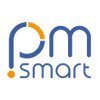 Manage your complete portfolio of ideas and projects successfully and efficiently with pm-smart. From the idea and planning to project execution and invoicing, you will find all essential functionalities in pm-smart single and multi-project management. As a P-leader, you want time for the really important key factors: project content, project tasks and communication - that's where pm-smart helps!...
Manage your complete portfolio of ideas and projects successfully and efficiently with pm-smart. From the idea and planning to project execution and invoicing, you will find all essential functionalities in pm-smart single and multi-project management. As a P-leader, you want time for the really important key factors: project content, project tasks and communication - that's where pm-smart helps!... MSO Management-Software ist ein No-Code Framework zur Gestaltung von individuellen Lösungen zur Digitalisierung, Analyse, Auswertung und Steuerung von Strategien, Programmen, Projekten, Maßnahmen und Prozessen.
Einfach, schnell, sicher, spezifisch, anwenderfreundlich :-)...
MSO Management-Software ist ein No-Code Framework zur Gestaltung von individuellen Lösungen zur Digitalisierung, Analyse, Auswertung und Steuerung von Strategien, Programmen, Projekten, Maßnahmen und Prozessen.
Einfach, schnell, sicher, spezifisch, anwenderfreundlich :-)... PLANTA project lets you keep a perfect overview of dates, resources and costs of your projects. Plan and control your projects systematically and you are always up to date with regard to the current project status.
PLANTA project lets you keep a perfect overview of dates, resources and costs of your projects. Plan and control your projects systematically and you are always up to date with regard to the current project status.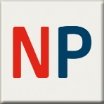 PKS NETPlan® is your internet-based system for project communication and management. It supports the consistent recording of all project information and enables you to control reliably and efficiently. The modular software with construction diary, document, protocol, contract and supplement management, plan administration as well as quality management is equipped with numerous practice-oriented functions for the construction and planning industry.
PKS NETPlan® is your internet-based system for project communication and management. It supports the consistent recording of all project information and enables you to control reliably and efficiently. The modular software with construction diary, document, protocol, contract and supplement management, plan administration as well as quality management is equipped with numerous practice-oriented functions for the construction and planning industry. Projektron BCS – BCS stands for Business Coordination Software. Comprehensive functions – individual customizing – reliable technology. The web-based software Projektron BCS combines comprehensive functions for project management and ERP in a single solution and supports companies in the efficient planning, control and evaluation of their projects and resources. Whether in project planning, coordination or analysis after completion – Projektron BCS enables you to control all project phases easily and effectively and to always keep control over project progress, expenses and material costs ...
Projektron BCS – BCS stands for Business Coordination Software. Comprehensive functions – individual customizing – reliable technology. The web-based software Projektron BCS combines comprehensive functions for project management and ERP in a single solution and supports companies in the efficient planning, control and evaluation of their projects and resources. Whether in project planning, coordination or analysis after completion – Projektron BCS enables you to control all project phases easily and effectively and to always keep control over project progress, expenses and material costs ... Central management and synchronization of all your projects: Scheduling, materials, personnel and trips; all information is summarized in your projects and planned by you with just a few clicks. Different employees can easily work together on a project at the same time. Whether in the office or warehouse, our rental software ensures that all tasks are completed on time. Other modules can be easily added, such as customer management, QR codes, material tracking, etc.
Central management and synchronization of all your projects: Scheduling, materials, personnel and trips; all information is summarized in your projects and planned by you with just a few clicks. Different employees can easily work together on a project at the same time. Whether in the office or warehouse, our rental software ensures that all tasks are completed on time. Other modules can be easily added, such as customer management, QR codes, material tracking, etc.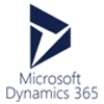 Microsoft Dynamics 365 is an innovative approach to intelligent business software and links your business processes with your Office applications. With integrated business intelligence tools, the software allows you to adapt and evolve in the market. Dynamics 365 enables your business to produce efficiently, provide exceptional customer service and succeed in the marketplace.
Microsoft Dynamics 365 is an innovative approach to intelligent business software and links your business processes with your Office applications. With integrated business intelligence tools, the software allows you to adapt and evolve in the market. Dynamics 365 enables your business to produce efficiently, provide exceptional customer service and succeed in the marketplace. Use FundsPro® to carry out all your planning quickly and in line with the guidelines. Achieve more transparency, effectiveness, security and predictability for projects worldwide. The software supports you in financial project planning, controlling, accounting and reporting. Its functionalities are perfectly tailored to the requirements of the non-profit sector and are independent of organizational size and area of application.
Use FundsPro® to carry out all your planning quickly and in line with the guidelines. Achieve more transparency, effectiveness, security and predictability for projects worldwide. The software supports you in financial project planning, controlling, accounting and reporting. Its functionalities are perfectly tailored to the requirements of the non-profit sector and are independent of organizational size and area of application.
